Stefano De Giorgis
Hanging Around: Cognitive Inspired Reasoning for Reactive Robotics
Jul 28, 2025Abstract:Situationally-aware artificial agents operating with competence in natural environments face several challenges: spatial awareness, object affordance detection, dynamic changes and unpredictability. A critical challenge is the agent's ability to identify and monitor environmental elements pertinent to its objectives. Our research introduces a neurosymbolic modular architecture for reactive robotics. Our system combines a neural component performing object recognition over the environment and image processing techniques such as optical flow, with symbolic representation and reasoning. The reasoning system is grounded in the embodied cognition paradigm, via integrating image schematic knowledge in an ontological structure. The ontology is operatively used to create queries for the perception system, decide on actions, and infer entities' capabilities derived from perceptual data. The combination of reasoning and image processing allows the agent to focus its perception for normal operation as well as discover new concepts for parts of objects involved in particular interactions. The discovered concepts allow the robot to autonomously acquire training data and adjust its subsymbolic perception to recognize the parts, as well as making planning for more complex tasks feasible by focusing search on those relevant object parts. We demonstrate our approach in a simulated world, in which an agent learns to recognize parts of objects involved in support relations. While the agent has no concept of handle initially, by observing examples of supported objects hanging from a hook it learns to recognize the parts involved in establishing support and becomes able to plan the establishment/destruction of the support relation. This underscores the agent's capability to expand its knowledge through observation in a systematic way, and illustrates the potential of combining deep reasoning [...].
* This article is published online with Open Access by IOS Press and distributed under the terms of the Creative Commons Attribution Non-Commercial License 4.0 (CC BY-NC 4.0)
The Wilhelm Tell Dataset of Affordance Demonstrations
Jul 23, 2025Abstract:Affordances - i.e. possibilities for action that an environment or objects in it provide - are important for robots operating in human environments to perceive. Existing approaches train such capabilities on annotated static images or shapes. This work presents a novel dataset for affordance learning of common household tasks. Unlike previous approaches, our dataset consists of video sequences demonstrating the tasks from first- and third-person perspectives, along with metadata about the affordances that are manifested in the task, and is aimed towards training perception systems to recognize affordance manifestations. The demonstrations were collected from several participants and in total record about seven hours of human activity. The variety of task performances also allows studying preparatory maneuvers that people may perform for a task, such as how they arrange their task space, which is also relevant for collaborative service robots.
* \c{opyright} 2025 IEEE. Personal use of this material is permitted. Permission from IEEE must be obtained for all other uses, in any current or future media, including reprinting/republishing this material for advertising or promotional purposes, creating new collective works, for resale or redistribution to servers or lists, or reuse of any copyrighted component of this work in other works
Semantic Web and Creative AI -- A Technical Report from ISWS 2023
Jan 30, 2025



Abstract:The International Semantic Web Research School (ISWS) is a week-long intensive program designed to immerse participants in the field. This document reports a collaborative effort performed by ten teams of students, each guided by a senior researcher as their mentor, attending ISWS 2023. Each team provided a different perspective to the topic of creative AI, substantiated by a set of research questions as the main subject of their investigation. The 2023 edition of ISWS focuses on the intersection of Semantic Web technologies and Creative AI. ISWS 2023 explored various intersections between Semantic Web technologies and creative AI. A key area of focus was the potential of LLMs as support tools for knowledge engineering. Participants also delved into the multifaceted applications of LLMs, including legal aspects of creative content production, humans in the loop, decentralised approaches to multimodal generative AI models, nanopublications and AI for personal scientific knowledge graphs, commonsense knowledge in automatic story and narrative completion, generative AI for art critique, prompt engineering, automatic music composition, commonsense prototyping and conceptual blending, and elicitation of tacit knowledge. As Large Language Models and semantic technologies continue to evolve, new exciting prospects are emerging: a future where the boundaries between creative expression and factual knowledge become increasingly permeable and porous, leading to a world of knowledge that is both informative and inspiring.
Neurosymbolic Graph Enrichment for Grounded World Models
Nov 19, 2024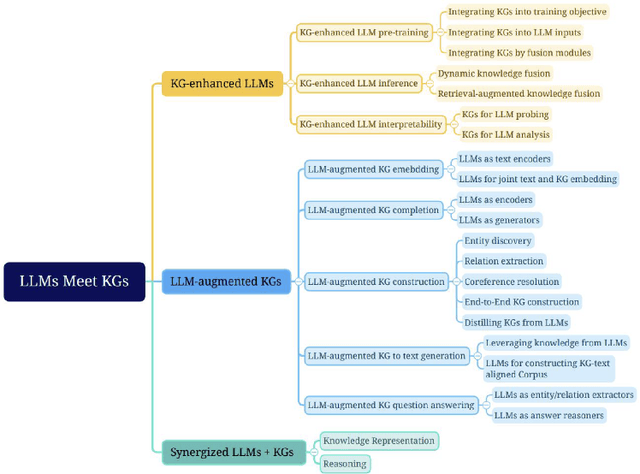

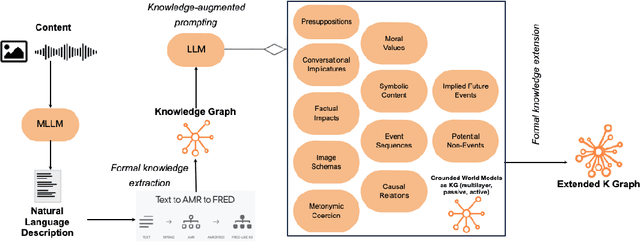
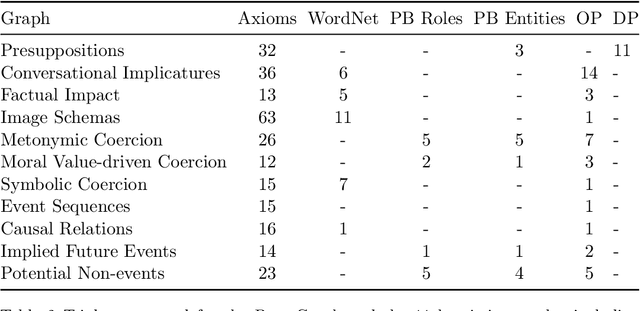
Abstract:The development of artificial intelligence systems capable of understanding and reasoning about complex real-world scenarios is a significant challenge. In this work we present a novel approach to enhance and exploit LLM reactive capability to address complex problems and interpret deeply contextual real-world meaning. We introduce a method and a tool for creating a multimodal, knowledge-augmented formal representation of meaning that combines the strengths of large language models with structured semantic representations. Our method begins with an image input, utilizing state-of-the-art large language models to generate a natural language description. This description is then transformed into an Abstract Meaning Representation (AMR) graph, which is formalized and enriched with logical design patterns, and layered semantics derived from linguistic and factual knowledge bases. The resulting graph is then fed back into the LLM to be extended with implicit knowledge activated by complex heuristic learning, including semantic implicatures, moral values, embodied cognition, and metaphorical representations. By bridging the gap between unstructured language models and formal semantic structures, our method opens new avenues for tackling intricate problems in natural language understanding and reasoning.
Explainable Moral Values: a neuro-symbolic approach to value classification
Oct 16, 2024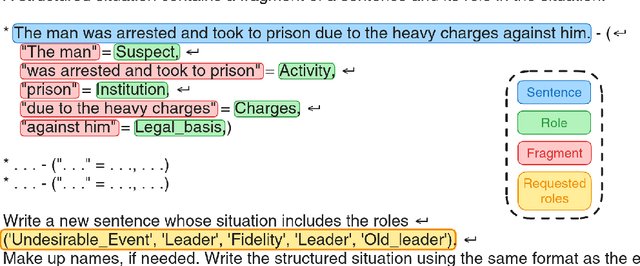
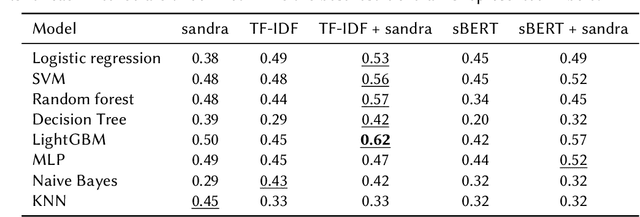
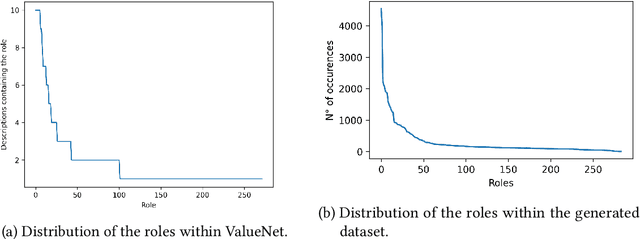
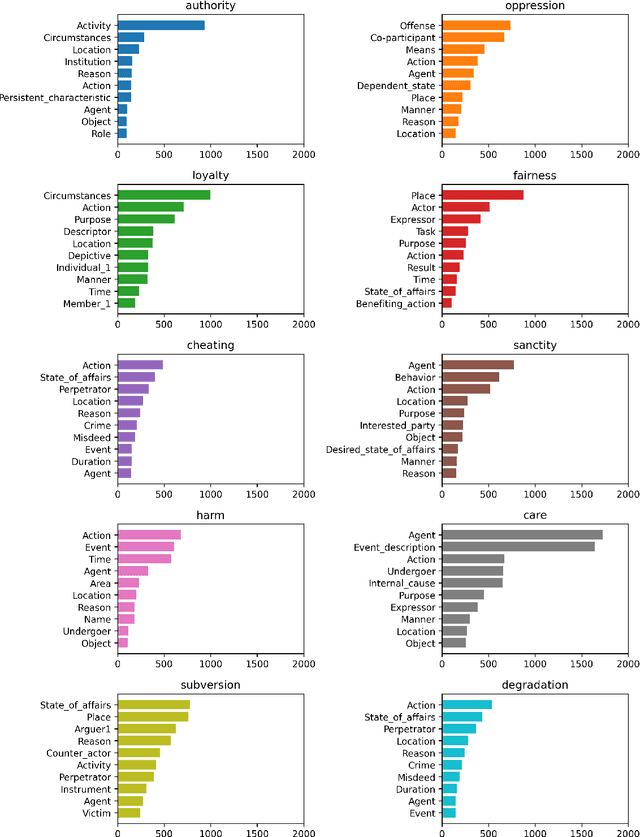
Abstract:This work explores the integration of ontology-based reasoning and Machine Learning techniques for explainable value classification. By relying on an ontological formalization of moral values as in the Moral Foundations Theory, relying on the DnS Ontology Design Pattern, the \textit{sandra} neuro-symbolic reasoner is used to infer values (fomalized as descriptions) that are \emph{satisfied by} a certain sentence. Sentences, alongside their structured representation, are automatically generated using an open-source Large Language Model. The inferred descriptions are used to automatically detect the value associated with a sentence. We show that only relying on the reasoner's inference results in explainable classification comparable to other more complex approaches. We show that combining the reasoner's inferences with distributional semantics methods largely outperforms all the baselines, including complex models based on neural network architectures. Finally, we build a visualization tool to explore the potential of theory-based values classification, which is publicly available at http://xmv.geomeaning.com/.
Sandra -- A Neuro-Symbolic Reasoner Based On Descriptions And Situations
Feb 02, 2024Abstract:This paper presents sandra, a neuro-symbolic reasoner combining vectorial representations with deductive reasoning. Sandra builds a vector space constrained by an ontology and performs reasoning over it. The geometric nature of the reasoner allows its combination with neural networks, bridging the gap with symbolic knowledge representations. Sandra is based on the Description and Situation (DnS) ontology design pattern, a formalization of frame semantics. Given a set of facts (a situation) it allows to infer all possible perspectives (descriptions) that can provide a plausible interpretation for it, even in presence of incomplete information. We prove that our method is correct with respect to the DnS model. We experiment with two different tasks and their standard benchmarks, demonstrating that, without increasing complexity, sandra (i) outperforms all the baselines (ii) provides interpretability in the classification process, and (iii) allows control over the vector space, which is designed a priori.
EFO: the Emotion Frame Ontology
Jan 19, 2024Abstract:Emotions are a subject of intense debate in various disciplines. Despite the proliferation of theories and definitions, there is still no consensus on what emotions are, and how to model the different concepts involved when we talk about - or categorize - them. In this paper, we propose an OWL frame-based ontology of emotions: the Emotion Frames Ontology (EFO). EFO treats emotions as semantic frames, with a set of semantic roles that capture the different aspects of emotional experience. EFO follows pattern-based ontology design, and is aligned to the DOLCE foundational ontology. EFO is used to model multiple emotion theories, which can be cross-linked as modules in an Emotion Ontology Network. In this paper, we exemplify it by modeling Ekman's Basic Emotions (BE) Theory as an EFO-BE module, and demonstrate how to perform automated inferences on the representation of emotion situations. EFO-BE has been evaluated by lexicalizing the BE emotion frames from within the Framester knowledge graph, and implementing a graph-based emotion detector from text. In addition, an EFO integration of multimodal datasets, including emotional speech and emotional face expressions, has been performed to enable further inquiry into crossmodal emotion semantics.
That's All Folks: a KG of Values as Commonsense Social Norms and Behaviors
Mar 01, 2023Abstract:Values, as intended in ethics, determine the shape and validity of moral and social norms, grounding our everyday individual and community behavior on commonsense knowledge. Formalising latent moral content in human interaction is an appealing perspective that would enable a deeper understanding of both social dynamics and individual cognitive and behavioral dimension. To tackle this problem, several theoretical frameworks offer different values models, and organize them into different taxonomies. The problem of the most used theories is that they adopt a cultural-independent perspective while many entities that are considered "values" are grounded in commonsense knowledge and expressed in everyday life interaction. We propose here two ontological modules, FOLK, an ontology for values intended in their broad sense, and That's All Folks, a module for lexical and factual folk value triggers, whose purpose is to complement the main theories, providing a method for identifying the values that are not contemplated by the major value theories, but which nonetheless play a key role in daily human interactions, and shape social structures, cultural biases, and personal beliefs. The resource is tested via performing automatic detection of values from text with a frame-based approach.
Knowledge Graphs Evolution and Preservation -- A Technical Report from ISWS 2019
Dec 22, 2020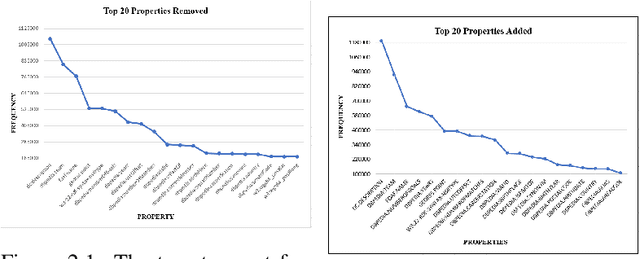
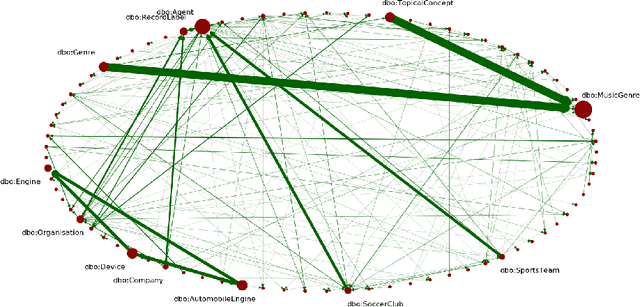
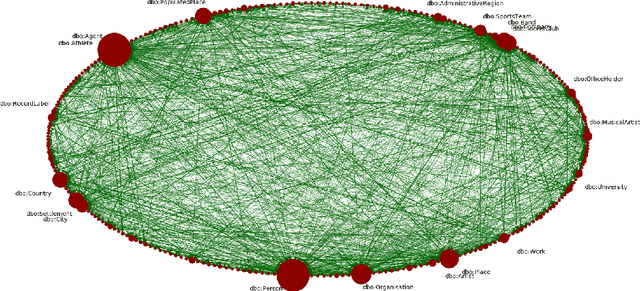
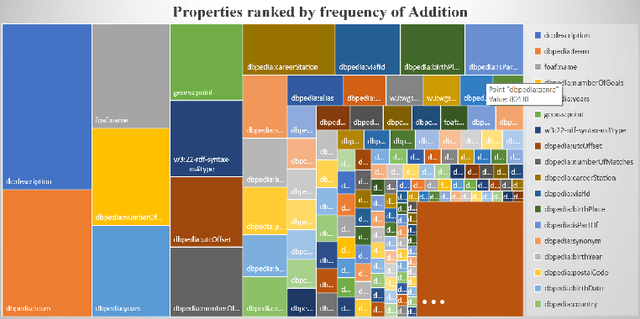
Abstract:One of the grand challenges discussed during the Dagstuhl Seminar "Knowledge Graphs: New Directions for Knowledge Representation on the Semantic Web" and described in its report is that of a: "Public FAIR Knowledge Graph of Everything: We increasingly see the creation of knowledge graphs that capture information about the entirety of a class of entities. [...] This grand challenge extends this further by asking if we can create a knowledge graph of "everything" ranging from common sense concepts to location based entities. This knowledge graph should be "open to the public" in a FAIR manner democratizing this mass amount of knowledge." Although linked open data (LOD) is one knowledge graph, it is the closest realisation (and probably the only one) to a public FAIR Knowledge Graph (KG) of everything. Surely, LOD provides a unique testbed for experimenting and evaluating research hypotheses on open and FAIR KG. One of the most neglected FAIR issues about KGs is their ongoing evolution and long term preservation. We want to investigate this problem, that is to understand what preserving and supporting the evolution of KGs means and how these problems can be addressed. Clearly, the problem can be approached from different perspectives and may require the development of different approaches, including new theories, ontologies, metrics, strategies, procedures, etc. This document reports a collaborative effort performed by 9 teams of students, each guided by a senior researcher as their mentor, attending the International Semantic Web Research School (ISWS 2019). Each team provides a different perspective to the problem of knowledge graph evolution substantiated by a set of research questions as the main subject of their investigation. In addition, they provide their working definition for KG preservation and evolution.
 Add to Chrome
Add to Chrome Add to Firefox
Add to Firefox Add to Edge
Add to Edge